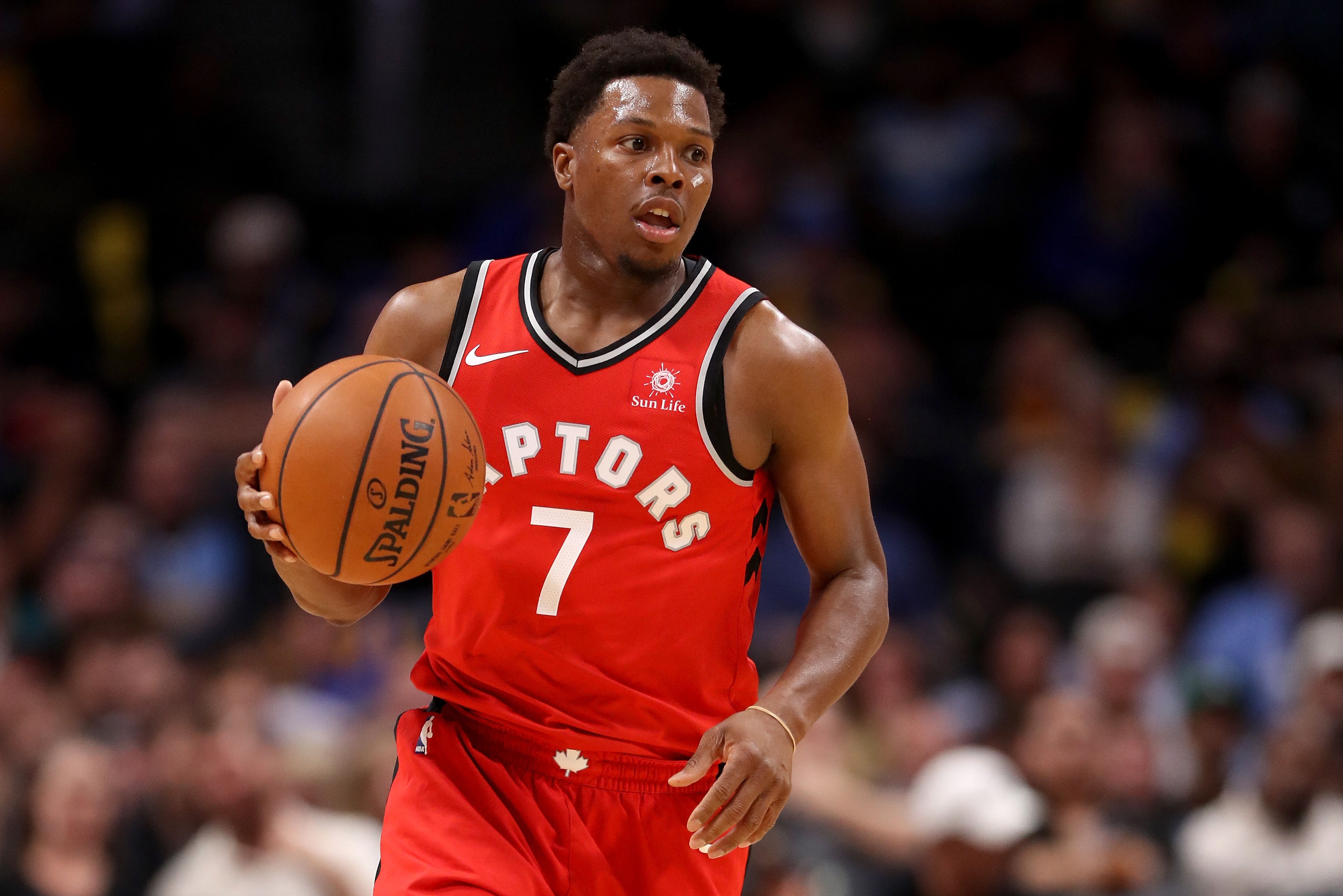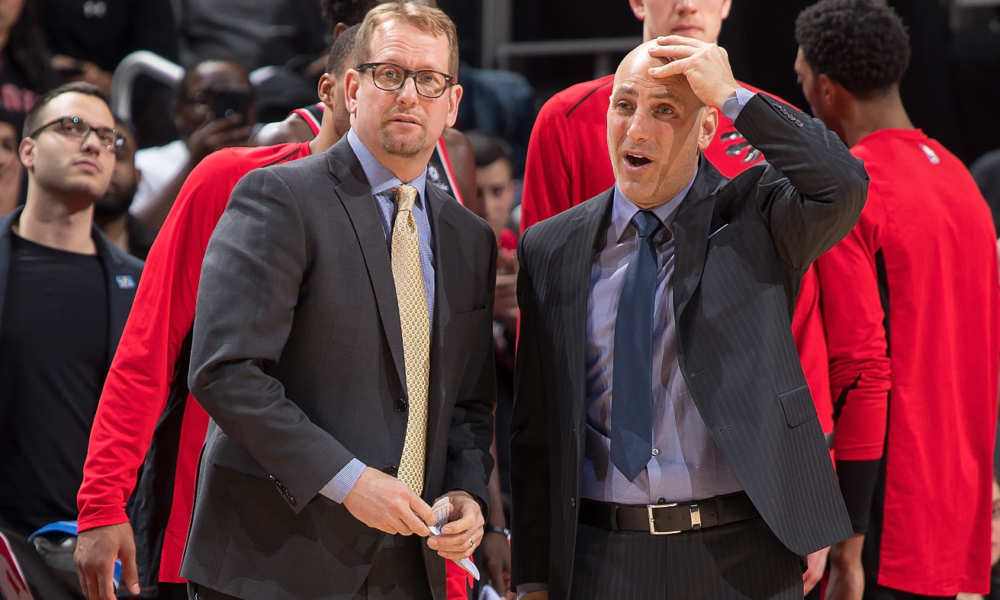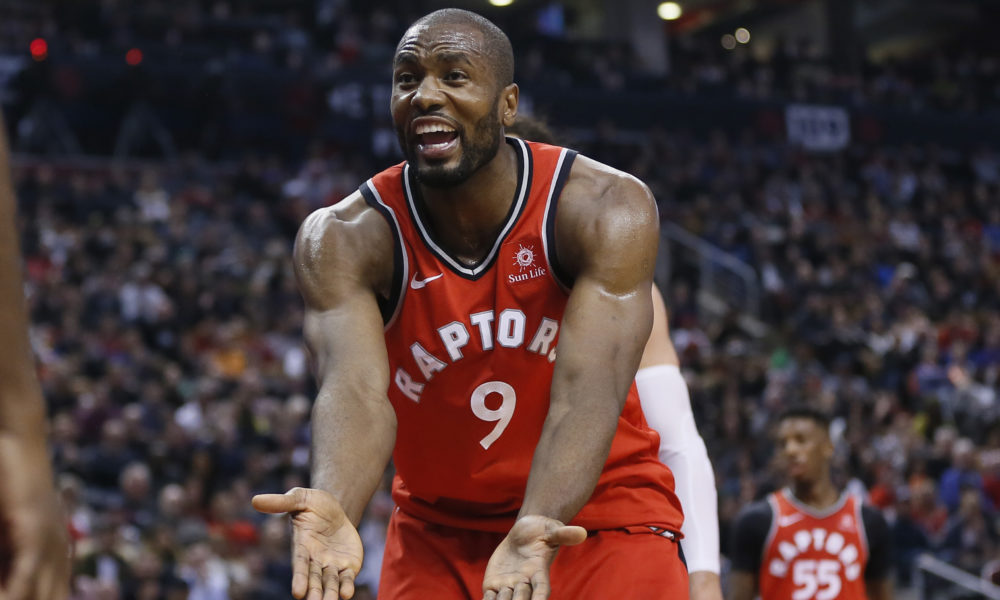Last summer when the Raptors committed to re-signing Serge Ibaka and Kyle Lowry, it was a commitment to keep the core of this team together for a few more years, and try to make another extended playoff run. With Lowry on the other side of 30 now, and his history of injury issues during the season that had him heading into the playoffs at less than 100%, there were plenty of questions about whether or not he could maintain his high level impact for another three seasons, and how the team would adjust to make up for any regression that there was in his game.
At the same time, with the franchise committing to a culture reset towards a more team-focused approach on offense, and that adjustment fell mainly in the hands of Lowry and DeMar DeRozan, who had done the lions share of the possession time offensively in years past. The All-Star pairing had to, in order for the changes to work, adjust their games to give space for other guys to step forward. To start the season, DeRozan settled into his role with ease, with his assists coming up in November while also looking efficient with his own scoring. For his part, however, Lowry struggled out the gate, scoring just 13.5 points per game on 36.8% from the field and 33.3% from three-point range in the six games in October. At least to start the season, it felt like age had caught up to Lowry and perhaps he had lost a step.
After OG Anunoby moved to the starting lineup in November, however, the Raptors saw the bench find their new legs with Fred VanVleet and Delon Wright playing beside each other as ballhandlers. In years past, the Raptors had relied on Lowry playing big minutes with the bench to keep things afloat, as well as his duties with the starting lineup, and that had played a role in him being among the league leaders in minutes, but with a strong pairing of backup point guards, the bench was able to function without him, letting his minutes come down. As he adjusted to the lighter load, his shooting percentages came back up to finish shooting nearly 40% from three-point range again this year, but with the lower minutes and replacing more of his two-point attempts with threes because of the changes in the team’s offense. He also saw his rebounding numbers and assist numbers come up overall, while his turnovers dipped.
The moments where he took over were fewer and somewhat farther between this season, but they definitely still were there, and he showed at various points in the season that he still had the ability to be KLOE when necessary, including a 40-point performance against Minnesota in January on just 25 shots, and scoring 30 on 14 attempts in a huge victory over the Houston Rockets in March in which the Raptors ended Houston’s 17-game winning streak. There were definitely some struggles throughout the season as well, including a late-season game against the Cavaliers, on the back of Villanova winning the NCAA title the night before, in which he looked like he wasn’t in any shape to play after celebrating his alma mater’s accomplishment, but this season wasn’t the massive regression it looked like early in the year. The Raptors remained a much better team with Lowry on the floor, and he remained near the top of the league in most advanced statistics, finishing 9th in the league in RPM and 17th in PIPM, and he again led the league in charges taken.
In the playoffs, it was Lowry’s toughness on the defensive end more than his offensive prowess that paid off for Toronto, with him setting the tone with his toughness, embracing matchups against taller players in John Wall and Bradley Beal and using his physicality to counter. The extra rest he had during the regular season due to the team’s depth paid off with him looking healthy in the playoffs for once. In the Cleveland series, the Raptors were eliminated in a sweep, again, and although Kyle did struggle at times on the defensive end, as did nearly every perimeter defender the Raptors had, he scored with ease during the series, shooting 57.1% from the field and 45.8% from three-point range while averaging 8.8 assists per game, but it still just wasn’t enough.
While he’s still not getting any younger, this season did give the blueprint for how the Raptors can retain much of Lowry’s usefulness as he does age, through using depth at the position to lower his minutes and keep him fresher, while utilizing his abilities to distribute and help other guys stay involved offensively, as well as to play off-ball due to his shooting. His defense likely will lag further during the next two seasons of his contract as well, but Lowry is a tough player who can, when necessary, absolutely step up and meet a physical challenge at that end, bringing a lot of value to the team, even if he won’t bring that every night. It’s no lock that he remains elite into his mid-30s, but at least this season, Kyle Lowry was still one of the best in the East.




